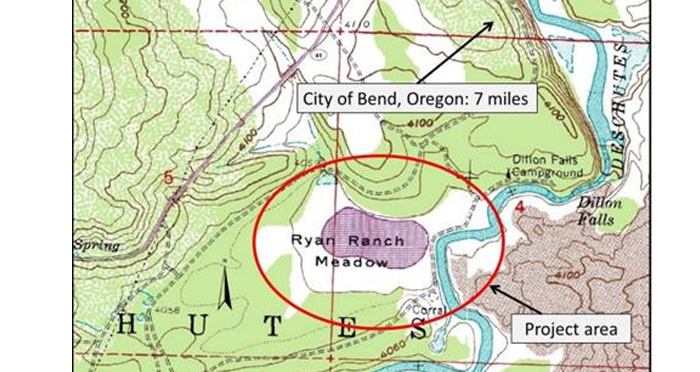(Photo courtesy of USDA Forest Service)
The Deschutes National Forest will start the process to restore the Ryan Ranch floodplain project on Tuesday, November 27 if conditions remain favorable.
Restoration work includes the removal of a berm along the edge of the Deschutes River in order to restore the hydrologic connection between the river and the Ryan Ranch floodplain. The lowered riverbank will be replanted with native vegetation and two small channels will be reconnected between the river and the basin. A new and smaller berm will be reconstructed away from the river to support the Deschutes River trail through the area. The new trail location will include two small footbridges to span the connecting channels.
The project will likely take three weeks but is highly weather dependent and may occur intermittently during the next few months to accommodate conditions on site. The Deschutes River trail will be closed through this section during work activities with an alternative route designated around the Ryan Ranch basin.
A second phase of the project will occur in 2019 which includes the construction of an accessible trail and wetland overlook that meets the standards of the Americans with Disabilities Act (ADA). Additionally, there will a new toilet installed and designated ADA parking will be constructed.
Background
Ryan Ranch is a historic slough floodplain of the Deschutes River that has been drained and isolated from the river for over 90 years. The area was used historically by Native Americans and more recently as pasture after being homesteaded in the late 1900’s. The Forest Service acquired Ryan Ranch in 1946 and continued grazing on site as part of a federal grazing allotment until 1989. The full ecological potential of the slough, including historic habitat for the Oregon spotted frog, has been limited by a berm that prevents the river from inundating the floodplain on a regular basis. Reconnecting the river with Ryan Ranch will benefit a wide range of terrestrial and aquatic species, including migratory and nesting waterfowl, amphibians and ungulates.




